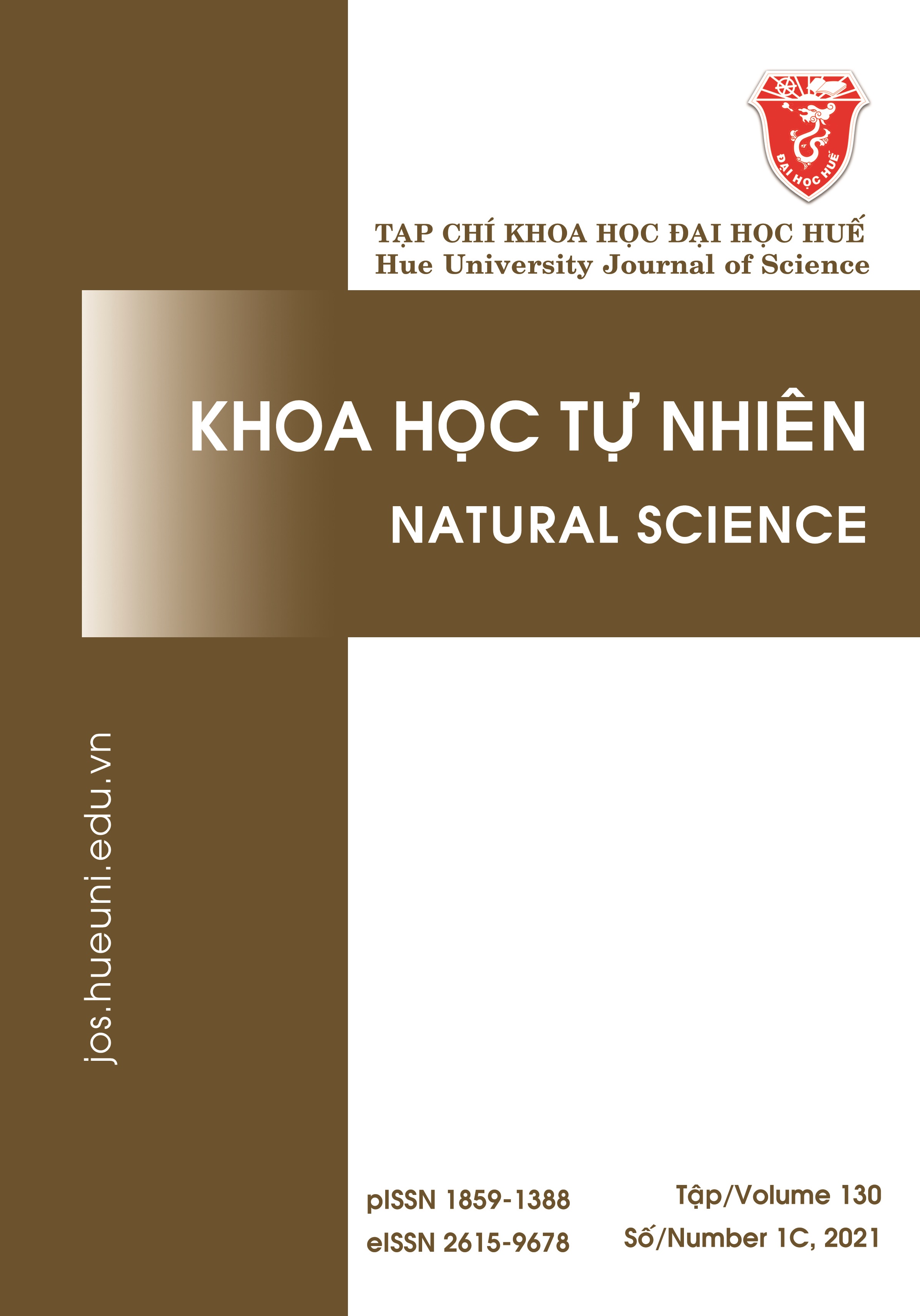Abstract
In this work, rod-flower-like SnO2 hierarchical micro-nanostructures are successfully synthesized via pyrolysis of SnO2/chitosan in a nitrogen atmosphere. The effects of the heating temperature, time and rate of the thermolysis on the morphologies of the as-prepared products were evaluated. The optimized parameters to synthesis flower-like ensembles composed of nanorods found are as follows: temperature 500 °C, time six hours, and heating rate 10 °C/min. The structural properties of the material are systematically investigated by using X-ray diffraction (XRD), scanning electron microscopy (SEM), and thermogravimetric analysis (TGA). The mechanism of the material formation is proposed.
References
- De A. Semiconductor metal oxide gas sensors: A review. Materials Science and Engineering: B. 2018; 229:206-217. DOI: https://doi.org/10.1016/j.mseb.2017.12.036
- Yang Y, Niu S, Han D, Liu T, Wang G, Li Y. Progress in Developing Metal Oxide Nanomaterials for Photoelectrochemical Water Splitting. Advanced Energy Materials. 2017;7(19):1700555. DOI: https://doi.org/10.1002/aenm.201700555
- George JM, Antony A, Mathew B. Metal Oxide Nanoparticles in Electrochemical Sensing and Biosensing: A Review. Microchimica Acta. 2018;185(7):358. DOI: https://doi.org/10.1007/s00604-018-2894-3
- Nguyen DC, Duong TQ. Progress through synergistic effects of heterojunction in nanocatalysts – Review. Vietnam Journal of Chemistry. 2020;58(4): 434-463. DOI: https://doi.org/10.1002/vjch.202000072
- Le TH, Nguyen DC, Tran TH, Dinh QK, Hoang TL, Duong TQ, et al. Synthesis, characterization, and comparative gas sensing properties of tin dioxide nanoflowers and porous nanospheres, Ceramics International. 2015; 41(10):14819-14825. DOI: https://doi.org/10.1016/j.ceramint.2015.08.003
- Li X, Peng K, Dou Y, Chen J, Zhang Y, An G. Facile synthesis of wormhole-like mesoporous tin oxide via evaporation-induced self-assembly and the enhanced gas-sensing properties. Nanoscale Research Letters. 2018;13(1):14. DOI: https://doi.org/10.1186/s11671-018-2434-4
- Liu J, Li Y, Huang X, Zhu Z. Tin Oxide Nanorod Array-Based Electrochemical Hydrogen Peroxide Biosensor. Nanoscale Research Letters. 2010;5(7):1177-1181. DOI: https://doi.org/10.1007/s11671-010-9622-1
- Chi WS, Lee CS, Long H, Oh MH, Zettl A, Carraro C, et al. Direct organization of morphology-controllable mesoporous SnO2 using amphiphilic graft copolymer for gas-sensing applications. ACS Applied Materials & Interfaces. 2017;9(42):37246-37253. DOI: https://doi.org/10.1021/acsami.7b07823
- Yu H, Yang T, Wang Z, Li Z, Xiao B, Zhao Q, et al. Facile synthesis cedar-like SnO2 hierarchical micro-nanostructures with improved formaldehyde gas sensing characteristics. Journal of Alloys and Compounds. 2017;724:121-129. DOI: https://doi.org/10.1016/j.jallcom.2017.07.017
- Aziz M, Abbas SS, Baharom WRW. Size-controlled synthesis of SnO2 nanoparticles by Sol–gel method. Materials Letters. 2013;91:31-34. DOI: https://doi.org/10.1016/j.matlet.2012.09.079
- Ćosović V, Ćosović A, Talijan N, Živković D, Manasijević D, Minić D. Improving dispersion of SnO2 nanoparticles in Ag–SnO2 electrical contact materials using template method. Journal of Alloys and Compounds. 2013; 567:33-39. DOI: https://doi.org/10.1016/j.jallcom.2013.03.094
- Li T, Schultea L, Hansena O, Ndoni S. Nanoporous Gyroid TiO2 and SnO2 by melt infiltration of block copolymer templates, Microporous and Mesoporous Materials, 2015;210:161-168. DOI: https://doi.org/10.1016/j.micromeso.2015.02.038
- Yin S, Tian T, Wienhold KS, Weindl CL, Guo R, et al. Key factor study for amphiphilic block copolymer‐templated mesoporous SnO2 thin film synthesis: Influence of solvent and catalyst. Advanced Materials Interfaces. 2020;7(18):2001002. DOI: https://doi.org/10.1002/admi.202001002
- Ahmed MA, AbdelMessih MF, El-Sherbeny EF, El-Hafez SF, Khalifa AMM. Synthesis of metallic silver nanoparticles decorated mesoporous SnO2 for removal of methylene blue dye by coupling adsorption and photocatalytic processes. Journal of Photochemistry and Photobiology A: Chemistry. 2017;346:77-88. DOI: https://doi.org/10.1016/j.jphotochem.2017.05.048
- Jin PP, Zou X, Zhou LJ, Zhao J, Chen H, Tian Y, et al. Biopolymer-assisted construction of porous SnO2 microspheres with enhanced sensing properties. Sensors and Actuators B: Chemical. 2014;204:142-148. DOI: https://doi.org/10.1016/j.snb.2014.07.085
- Chowdhury R, Barah N, Rashid H. Facile biopolymer assisted synthesis of hollow SnO2 nanostructures and their application in dye removal. ChemistrySelect. 2016;1(15):4682-4689. DOI: https://doi.org/10.1002/slct.201600730
- Yu C, Li X, Liu Z, Yang X, Huang Y, Lin J, et al. Synthesis of hierarchically porous TiO2 nanomaterials using alginate as soft templates. Materials Research Bulletin. 2016;83:609-614. DOI: https://doi.org/10.1016/j.materresbull.2016.07.014
- Ganesan R, Gedanken A. Synthesis of WO3 nanoparticles using a biopolymer as a template for electrocatalytic hydrogen evolution. Nanotechnology. 2007;19(2):025702. DOI: https://doi.org/10.1088/0957-4484/19/02/025702
- Dutta S, Patra AK, De S, Bhaumik A, Saha B. Self-assembled TiO2 Nanospheres by Using a Biopolymer as a Template and Its Optoelectronic Application. ACS Applied Materials & Interfaces. 2012;4(3):1560-1564. DOI: https://doi.org/10.1021/am201759w
- Xie Y, Kocaefe D, Chen C, Kocaefe Y. Review of research on template methods in preparation of nanomaterials. Journal of Nanomaterials. 2016;2016:1-10. DOI: https://doi.org/10.1155/2016/2302595
- Dang TTN, Chau TLT, Duong VH, Le TH, Tran TVT, Le QT, et al. Water-soluble chitosan-derived sustainable materials: Towards filaments, aerogels, microspheres, and plastics. Soft Matter. 2017; 13(40):7292-7299. DOI: https://doi.org/10.1039/c7sm01292f
- Nhàn ĐTT, Anh NTL, Thắng LQ, Nghiên cứu tổng hợp Chitosan - SnO2 có cấu trúc đa cấp: Ảnh hưởng của nhiệt độ và thời gian đến hình thái của SnO2, Tạp chí Hóa học, 2019;57(4E1,2):120-124.
- Dang TTN, Nguyen TD, Lizundia E, Le QT, MacLachlan MJ. Biomimetic mesoporous cobalt ferrite/carbon nanoflake helices for freestanding lithium-ion battery anodes. ChemistrySelect. 2020; 5(27):8207-8217. DOI: https://doi.org/10.1002/slct.202002152.
- Khuc QT., Vu XH, Dang DV, Nguyen DC. The influence of hydrothermal temperature on SnO2 nanorod formation. Advances in Natural Sciences: Nanoscience and Nanotechnology. 2010;1(2):025010. DOI: https://doi.org/10.1088/2043-6254/1/2/025010
- Xi G, Ye J. Ultrathin SnO2 nanorods: Template and surfactant-free solution phase synthesis, growth mechanism, optical, gas-sensing, and surface adsorption properties. Inorganic Chemistry. 2010; 49(5):2302-2309. DOI: https://doi.org/10.1021/ic902131a
- Inderan V, Lim SY, Ong TS, Bastien S, Braidy N, Lee HL. Synthesis and Characterisations of SnO2 Nanorods via Low Temperature Hydrothermal Method. Superlattices and Microstructures. 2015;88: 396-402. DOI: https://doi.org/10.1016/j.spmi.2015.09.031
- Liang Y, Fang B. Hydrothermal synthesis of SnO2 nanorods: Morphology dependence, growth mechanism and surface properties. Materials Research Bulletin. 2013;48(10):4118-4124. https://doi.org/10.1016/j.materresbull.2013.06.040
- Liu Y, Guo Y, Liu Y, Xu X, Peng H, Fang X, et al. SnO2 nano-rods promoted by In, Cr and Al cations for toluene total oxidation: The impact of oxygen property and surface acidity on the catalytic activity. Applied Surface Science. 2017;420:186-195. DOI: https://doi.org/10.1016/j.apsusc.2017.05.146
- Tan L, Wang L, Wang Y. Hydrothermal synthesis of SnO2 nanostructures with different morphologies and their optical properties. Journal of Nanomaterials. 2011;2011:1-10. DOI: https://doi.org/10.1155/2011/529874

This work is licensed under a Creative Commons Attribution-ShareAlike 4.0 International License.
Copyright (c) 2021 Array




